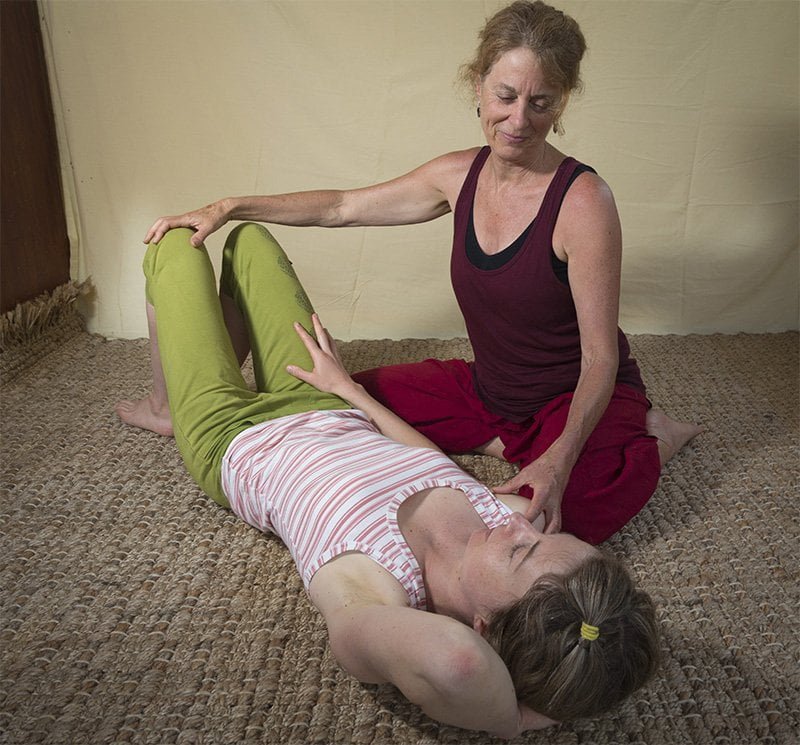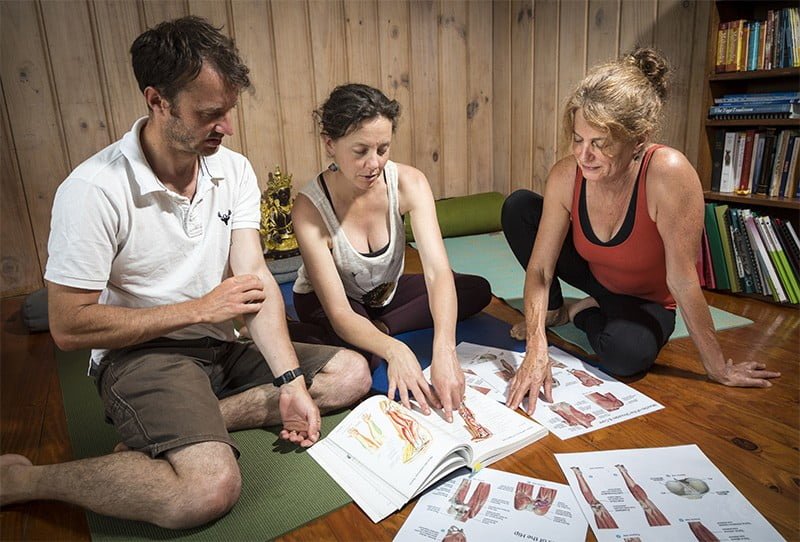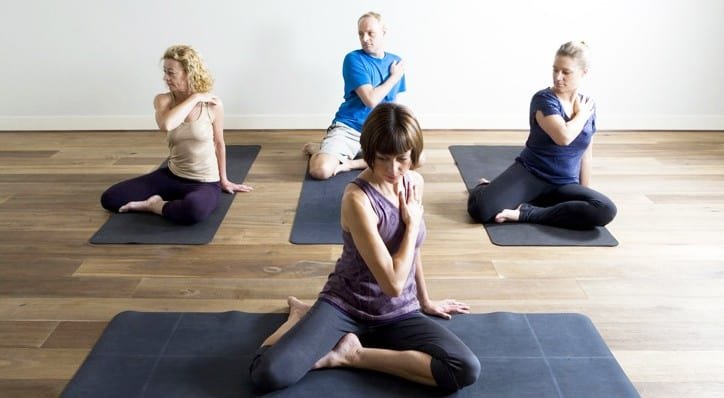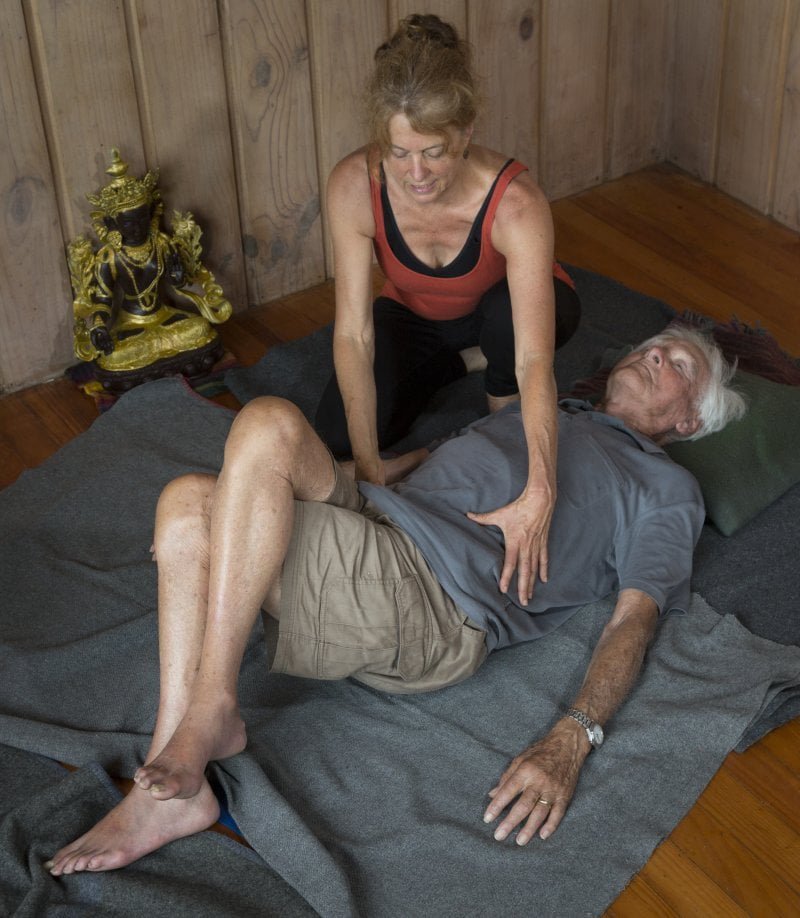Somatics and Mindfulness
with Dyana Wells
Two 4-Day Weekends
Saturday to Tuesday: 15-18 June and 27-30 July 2019
In this course we will be exploring the principles of somatic movement, diving deep to see how adaption to life circumstances creates difficult movement patterns, difficult emotional patterns and unhealthy organ function. We will learn how to work with the body to restore natural movement in a safe effective way.
We will be studying musclo-skeletal anatomy and function in depth to understand how and why we do what we do, and why somatic exercises are so effective. We will be learning the principles of neuro-muscular reprogramming to understanding the interaction between the brain and the muscles.
The course incorporates Buddhist principles and practice, in particular the foundation practices of mindfulness, Tibetan Kum Nye yoga exercises and the four Brahma Viharas; loving kindness, compassion, sympathetic joy and equanimity.
We heal through the mind, the energy body and the physical body, and in this course we will be exploring the different ways these bodies work and interact to restore health.
Teaching practice is a key part of the training and students will have plenty of opportunity to practice their teaching in front of the small group and receive constructive feedback from the teacher and the other students.
If you want to improve your fitness in one area - say the ability to tie your own shoelaces again - it is important to bring your whole body and the rest of the self into the action.
You have to consciously become aware of your entire body and how it feels and moves. Then, when you have the brain perceiving differences and integrating more parts of yourself, the improvement is fast and transformational.
Anat Baniel
Our sensory-motor systems continually respond to daily stresses and traumas with specific muscular reflexes. These reflexes create habitual muscular contractions, which we cannot voluntarily relax. The result is stiffness, soreness and a restricted range of movement.
Somatic exercises are a direct way to reprogram the sensory-motor system and reverse this process. Bodily decrepitude presumed under the myth of aging is not inevitable. It is, by and large, both avoidable and reversible.
Thomas Hanna
Every time that we expand the limits of our knowledge, our sensibility and the precision of our actions increase and the limits of what is considered natural and normal also expand.
When activity is freed of tension and superfluous effort the resulting ease makes for greater sensitivity and better discrimination, which makes for greater ease in action.
Moshe Feldenkrais
Helen Kerrison
This is such an interesting course! I loved it. Dyana is an exceptional teacher. Her wealth of knowledge, passion and enthusiasm is inspiring and contagious. Integrating the principals of somatic movement into my life and my classes has been invaluable.
My own practice has transformed, I believe I am a better yoga teacher, and after years of pain in my body I am healing. I highly recommend if you are thinking about it. Please feel free to ask me about my experience ☺️
Sarah Ford
Anatomy is probably my favourite subject! Dyana is incredibly knowledgeable and shares her enthusiasm infectiously! Great combination of talk and practical.
Lori Leigh
Dyana was clear, flexible and attentive to the entire class. I really appreciated her warmth and investment in her teaching.
Juliet Slovgrove
I found it absolutely fascinating to learn how and why the body works as it does. Everything was relevant, Dyana related each and every aspect we covered right from the cells to how they relate to the practice of yoga. This knowledge will definitely make me a better teacher, and there are many ways that I will be able to integrate it into my teaching.
I found Dyana really inspirational.
Melissa Gardiner
Meditation practices were brilliant, as were the talks. A wealth of knowledge.
Candice Lewis
I loved the close attention to body, breath and the relationship to the ground. That was something I really needed and will be useful in whatever work I do with people, no matter what. I loved all the spiritual stuff, into it, find it beautiful and useful.
Kelly Watson
Dyana brings an inspiring enthusiasm and genuine curiosity to her teachings. Her wealth and depth of knowledge and experience are shared with a passion and delight, encouraging a spirit of enquiry and nurturing a love of learning in her students.




Sample Schedule
7.30 - 9am Somatics practice
9.30am - 12pm Yoga Philosophy from a Buddhist perspective. Mindfulness practices including Kum Nye. The Brahma Viharas theory and practice.
12pm - 1.30pm Applied anatomy theory and practice. Bones, Joints, Muscles, anatomy trains Neuro-muscular reprogramming. Theory of somatic reeducation. How we learn movement.
2.30pm - 3.30pm Applied Anatomy.
3.30pm - 4.30pm Teaching practice.
4.30 - 6pm A yoga Class incorporating somatice principles.
